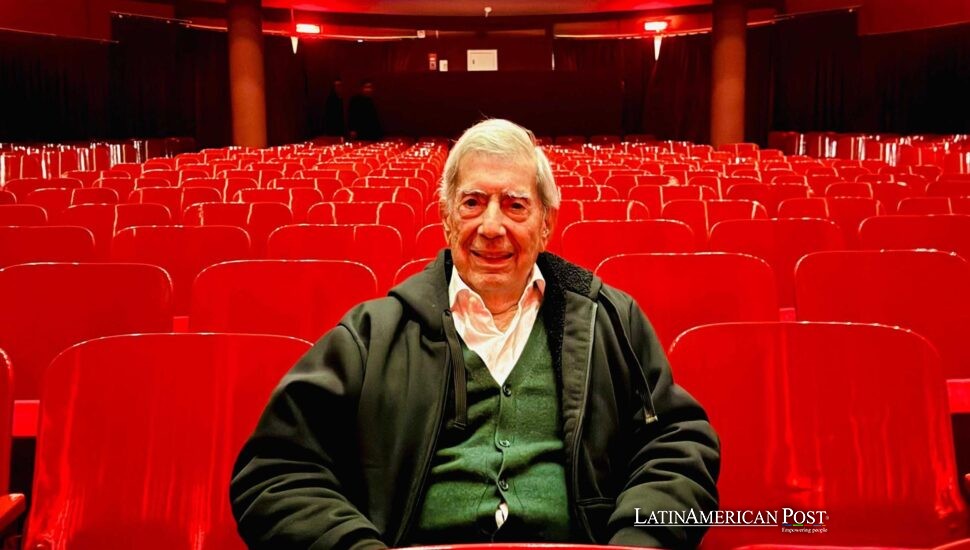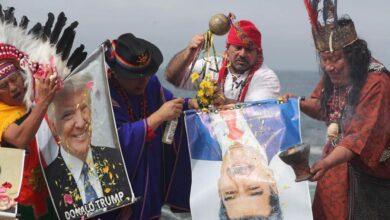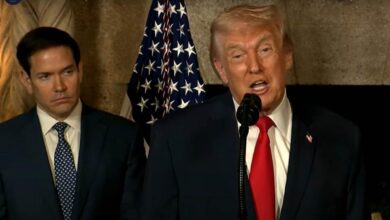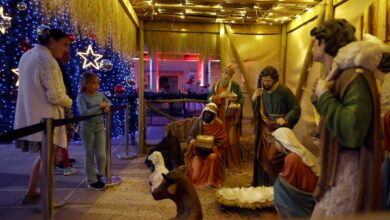Peru’s Genius: Vargas Llosa’s Cinematic and Theatrical Legacy

At 89 years old, acclaimed Peruvian novelist and Nobel Laureate Mario Vargas Llosa passed away on Sunday in Lima. His literary works saw various adaptations during his renowned career which increased global public interest in his creations and lasting legacy.
Life of Literary Genius
Mario Vargas Llosa’s passing marks the end of an era in Latin American literature. Born in 1936 in the southern Peruvian city of Arequipa, he rose to prominence during the Latin American literary “Boom” alongside such luminaries as Gabriel García Márquez and Julio Cortázar. Early on, Vargas Llosa distinguished himself through an incisive narrative style, a penchant for sociopolitical commentary, and an unwavering commitment to exploring the human condition. Through his novels, essays, and theatrical productions, he explored Latin American societal complexities, which included authoritarianism, social injustice, and tensions between traditional values and modern aspirations.
Since he embarked on his career as a writer, critics recognized his precise use of language alongside his complex narrative techniques. La ciudad y los perros (The Time of the Hero) allowed global audiences to experience the author’s lifelike portrayals of a Peruvian military academy which established him as an international literary figure. As time passed, Vargas Llosa wrote essays, journalistic pieces, and plays that demonstrated his abilities across multiple disciplines. Beyond literature, he was often embroiled in political debates, running unsuccessfully for the Peruvian presidency in 1990—a venture that only enhanced his public profile.
By winning the Nobel Prize in Literature in 2010, Vargas Llosa not only earned a crowning achievement for his own career but also brought renewed attention to Latin American letters. Those who studied his oeuvre quickly recognized his fascination with Peru’s cultural, social, and political tapestry. Even as he ventured into global settings in some of his narratives—exploring everything from the Dominican Republic’s dictatorship under Rafael Leónidas Trujillo to stories based in Brazil and Europe—his roots in Peru shaped the beating heart of his works.
His death at 89 has spurred tributes from cultural figures worldwide. Yet even before his passing, part of his enduring appeal lay in how many of his stories left the printed page to find new life on film, in theater, and on television. Adaptations brought his narratives to new audiences. They also solidified his position among influential authors in contemporary literature.
From Page to Screen: Cinematic Adaptations
The transformation of Vargas Llosa’s novels into movies helped extend his fame past literary boundaries. Directors and actors could visualize the stories and potent themes from his writing through film projects set in the Amazon jungle or within fictional Dominican Republic history.
Perhaps the most famous example is Pantaleón y las visitadoras (Captain Pantoja and the Special Services). Adapted twice—first in 1976 by José María Gutiérrez and then in 2000 by the Peruvian director Francisco J. Lombardi—this satirical tale follows a strait-laced army officer tasked with creating a clandestine prostitution service for troops stationed in the Amazon. The 2000 film starring Salvador del Solar and Angie Cepeda quickly became a commercial success throughout multiple Spanish-speaking nations because audiences connected with its humorous yet scandalous narrative. The film adaptation helped sustain the novel’s continuous appeal by transforming the expression “Pantaleón and his visitors” into an established cultural reference throughout Peru and in wider regions.
The prominent Peruvian director Francisco J. Lombardi made his own interpretation of Vargas Llosa’s La ciudad y los perros in 1985. The English title The City and the Dogs received praise for its raw depiction of life at a severe military academy. Critics praised Lombardi for his accurate depiction of the suffocating environment that highlights the novel’s examination of brutality, friendship dynamics, and the long-term effects of strict educational systems. The Peruvian film achieved recognition. It represented a noteworthy success in the country’s film history plus demonstrated local directors’ ability to produce complex productions.
Other Latin American directors wanted to adapt Vargas Llosa’s works to film. Mexican filmmaker Jorge Fons delved into the author’s novella, Los cachorros (The Cubs), in a 1973 adaptation that probes masculinity and youthful trauma. Though not as universally recognized as Pantaleón y las visitadoras or La ciudad y los perros, it added another dimension to Vargas Llosa’s portfolio of adaptations, spotlighting a sensitive subject that echoes throughout Latin American societies.
One of the most significant cinematic forays into Vargas Llosa’s catalog is undoubtedly La fiesta del chivo (The Feast of the Goat), brought to film in 2005 by the author’s cousin, Luis Llosa. Starring Isabella Rossellini and Tomas Milian, the movie centers on the despotic rule of General Rafael Leónidas Trujillo in the Dominican Republic. The analysis of power, complicity, and memory fits well with the novel’s main idea. It shows clearly the harshness of dictatorship. The new version reminded people of the width of Vargas Llosa’s work. He did not write only about Peru. He also wrote about general topics, such as freedom and repression.
Lastly, La tía Julia y el escribidor (Aunt Julia and the Scriptwriter), based on the writer’s own youthful marriage to his older aunt, Julia Urquidi, found its way to Hollywood in 1990 under the title Tune in Tomorrow, directed by Jon Amiel. Keanu Reeves and Barbara Hershey took on the lead roles, though the film departed considerably from the original narrative. The adaptation of the novel exposed English-speaking audiences to Vargas Llosa’s humor and reflective style while critics and fans discussed its deviations, thereby broadening the author’s international influence.
Stepping Onto the Stage: Theatrical Works and Adaptations
Beyond the silver screen, Mario Vargas Llosa harbored a profound love for theater. He wrote numerous plays outright while also adapting parts of his prose for live performance. In fact, he considered theater a space where the interplay of character, dialogue, and setting could be distilled to its most immediate form. Audiences across Latin America and Spain discovered that Vargas Llosa’s dramatic flair was as potent as his storytelling prowess on the page.
Two of his most recognized theatrical scripts, La chunga (1986) and Kathie y el hipopótamo (1983), showcased his range. La chunga unfolds in a seedy bar in northern Peru, capturing the tension between a proprietor named “La Chunga” and a group of men who frequent her establishment. The story explores power dynamics, gender roles, and the mysteries of memory—a microcosm of the thematic breadth typical in Vargas Llosa’s universe. Often staged in Peru, Mexico, and Spain, it demonstrates the universal relatability of his characters and conflicts.
Other noteworthy plays include El loco de los balcones (1993) and Odiseo y Penélope (2007). El loco de los balcones portrays a protagonist obsessed with preserving Lima’s colonial architecture, a quixotic figure who stands for cultural heritage and the fight against destructive modernity. Odiseo y Penélope, meanwhile, reinvents Homer’s classic tale in a stage piece first performed at the Roman Theater of Mérida in Spain. Vargas Llosa played Odysseus. Spanish actress Aitana Sánchez-Gijón appeared as Penelope with him on stage. The production received a lot of support. People liked its connection to literature. The author’s performance earned approval, too.
Also Read: Mexico’s Path to Wellness: Innovations, Exercise, and Prevention
Additionally, La señorita de Tacna (1981) delves into the recollections of an elderly aunt, layering memory, nostalgia, and the passage of time. It is sometimes considered his “first” theatrical work in a mature sense, although an earlier piece, La huida del Inca (1952)—written when Vargas Llosa was just 16—technically predates it. The creation of plays, whether based on classical stories or from Vargas Llosa’s Peru experiences, shows his belief that theater can reveal aspects of human experience often hidden. His work demonstrates a commitment to exploring what it means to be human through dramatic storytelling. Through this art form, Vargas Llosa offers insights.




